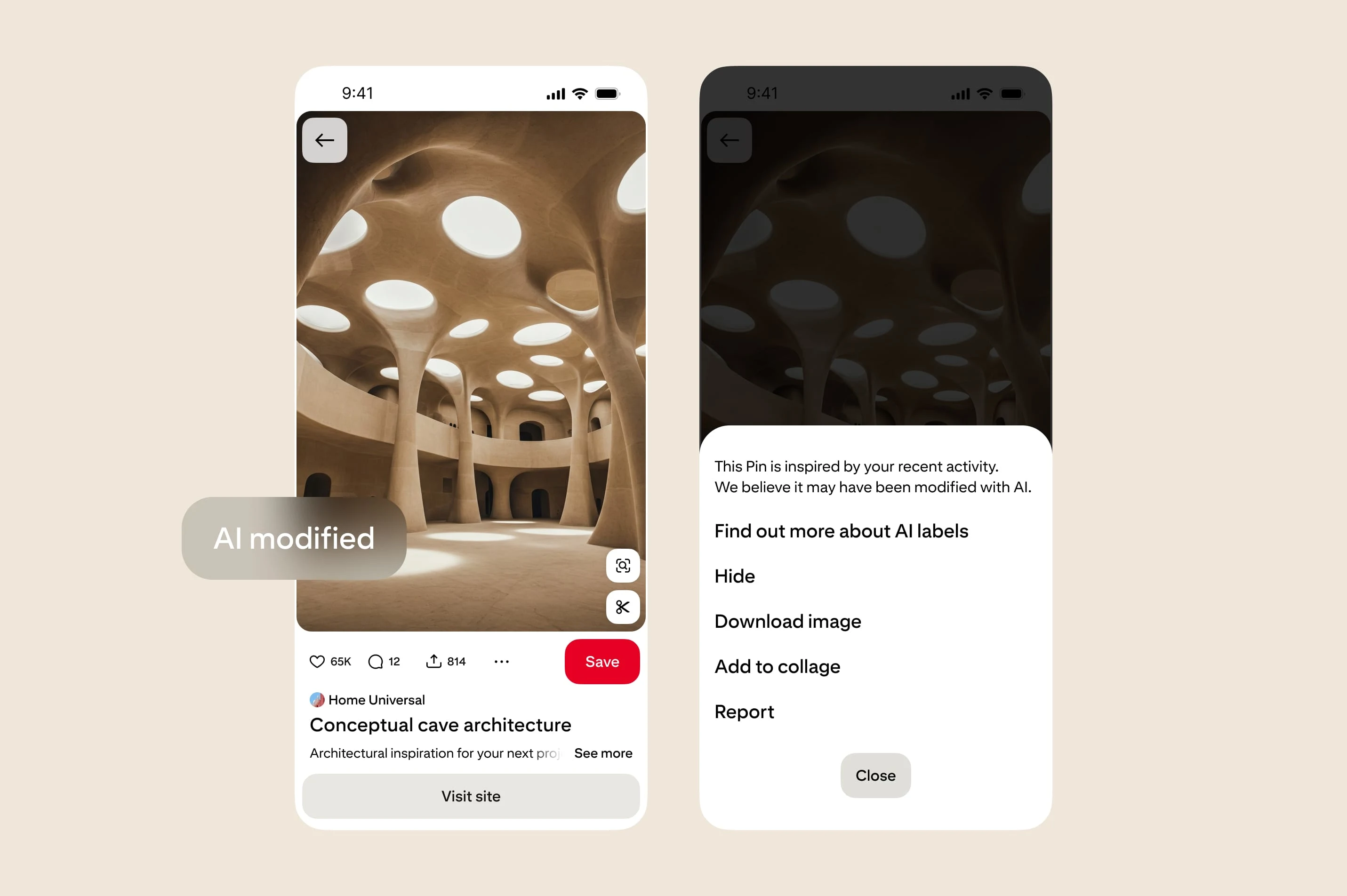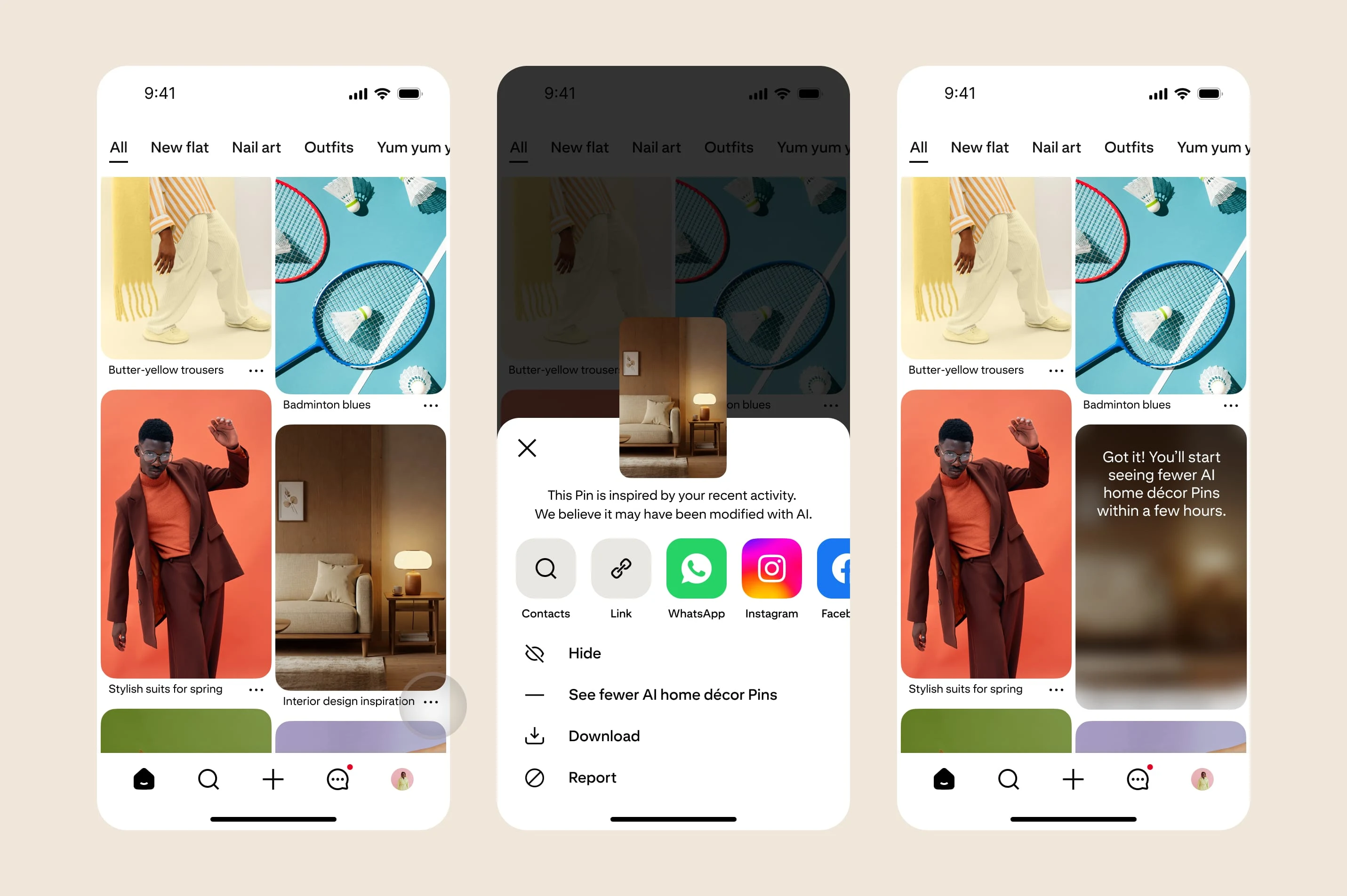Pinterest is rolling out two key features to combat the flood of artificial intelligence (AI)-generated images that have frustrated many users. The “AI Modified” label and a new “See fewer” option aim to restore trust in the platform that once served as a reliable source for genuine inspiration.
The company started rolling out these transparency tools worldwide on April 30 after testing them for several months. This was detailed in an announcement on the Pinterest Newsroom. Users will now see an “AI modified” label in the bottom left corner when they click on image Pins that might be AI-generated.


Source: Pinterest
“As people encounter AI-generated content on Pinterest, we are empowering our users to make more informed choices about the content they see,” said Matt Madrigal, Pinterest’s Chief Technology Officer. He added that AI content should “enhance users’ ability to discover and act on their inspiration” in a way that “benefits everyone on Pinterest.”
The labeling system works by analyzing image metadata and using Pinterest’s own “classifiers” to automatically detect AI-generated content. Pinterest knows the system isn’t perfect, so they’ve set up a way for creators to appeal if they think their content was labeled wrongly.
Besides just labeling AI content, Pinterest will soon let users filter it out. A new “See fewer” experimental feature will appear in the three-dot menu at the bottom right of pins. When users select this, Pinterest’s algorithms will show them less AI-generated content of that type.
This filtering will first focus on categories “prone to AI modification or generation”, like beauty and art. Pinterest plans to add more categories later.


Source: Pinterest
For months, many Pinterest users have been complaining about “AI slop”—low-quality, mass-produced AI images—taking over their feeds. Users report that AI images often show fake products like clothes that don’t exist or designs that can’t be made in real life.
Pinterest hasn’t said exactly when the filtering option will fully launch, only that it will arrive “soon.” These features represent the company’s first major attempt to balance the creative potential of AI while preserving the platform’s utility for its long-time users.























